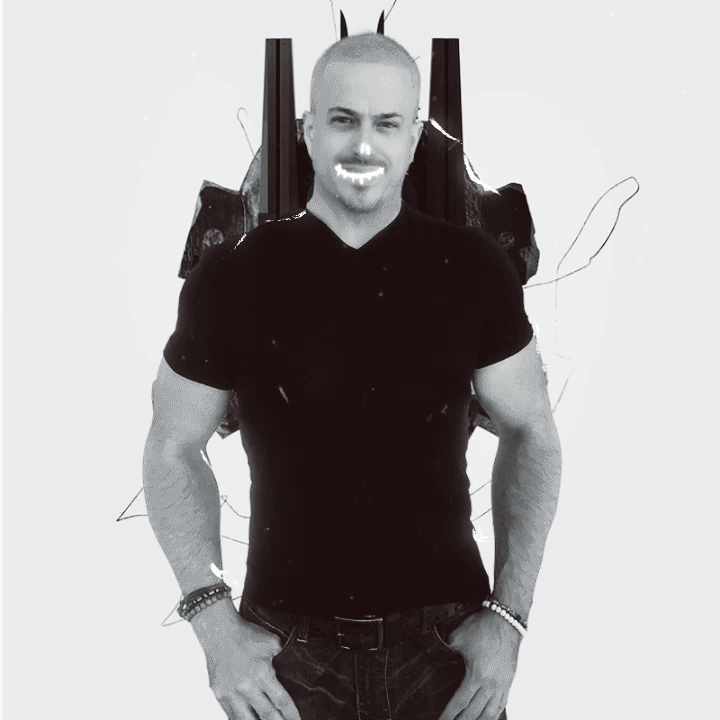
Artificial intelligence has come to save the arts from themselves – Taipei Times
Artificial intelligence has come to save the arts from themselves
In 1959 — or Year 63 Before ChatGPT — Soviet poet Boris Slutsky wrote Physicists and Lyrics, a poem affirming the defeat of poets at the hands of engineers:
It’s not even humiliating,
In fact, it’s rather fun,
Watching our rhymes,
Deflate like foam,
As greatness retreats,
Solemnly into logarithms.
As modern generative AI can actually produce poetry that a published writer of verse can admit is sometimes better than their own and generate images that a millionaire digital artist can praise without condescension, Slutsky’s tongue-in-cheek lines could be deemed unintentionally prophetic.
However, he also wrote Lyrics and Physicists, another poem on the subject, only a few years after the first one:
You have only won a battle,
You haven’t yet won the war,
We’ve barely pulled our sabers,
Halfway out of their scabbards,
And while the saber is sliding free,
Shining a light on the arm muscles,
Poets take no offense at you —
Only versifiers do.
Herein lies the actual prophecy. The engineer’s contempt for the humanities major has culminated with the creation of DALL-E and ChatGPT just in time to save the arts and humanities from themselves.
However, the salvation is likely to come at a high human cost.
The technological revolution that began with personal computing has made creation so easy that going into a “soft” occupation is the path of least resistance these days. A writer no longer needs to spend months in dusty archives to research a book — or days going through printed matter to produce a column. Nor are any intermediaries required to publish writings — authors can go directly to the audience.
Visual artists, for their part, have acquired such perfect digital tools that good technique is less of a requirement than ever before; photography, illustration and animation have turned into commodities. Only the most recent advances in generative AI have begun to threaten the livelihood of hundreds of thousands of professionals in these areas.
This is a development that should have been expected.
True, those of us in creative trades — and this includes myself, my wife and our older daughter, who are both artists — have long made less money, as a group, than engineers, but less and less effort has been required of us to produce what we sold.
We have blithely Googled, used electronic editing tools, online thesauruses and translation, created artwork using commercial software. It was inevitable that at some point, the tools would outgrow us and take over some of the tasks that the market has been sending our way.
I can understand the anguish of the average illustrator — and yes, that of Beeple, too — as they stare at a Midjourney creation. I get the fear clutching at the throat of a columnist who has fed an idea to ChatGPT and received a text that would get past the editor with minimal changes. They — we — have been taught since childhood that their creativity was uniquely theirs. That a machine-learning model can reproduce it if it has been fed enough training material is a shock.
The first reactions are endearingly human: Indignation that the models use actual people’s work as training data without any respect for copyright, a search for ways to trick the software into making errors or saying something politically incorrect. There you go!? At least humans will be needed as a kind of morality police for AI bots!
My wife has laughed at the way AI “artists” inevitably mishandle hands, paws and feet: The number and shape of fingers are — check it out — unpredictable. An artist who lacks technique will also hide hands in pockets and feet in the grass.
I have made fun of ChatGPT’s insipid, timid writing and its aplomb when it is absurdly wrong. Both of us know, though, that for most consumers and for most commercial uses, what AI can do is already enough; to a manager with a budget, it is practically indistinguishable from what a human would have been hired to create a year or two years ago. As for the errors, they will get fixed, as they always have been.
It is pointless to demand more regulation, more copyright protection, tougher policing of the content. The weakest of us will, of course, find sustenance in these forms of political control, but that will be a cop-out: If one believes in the freedom of expression and agrees that “good artists copy, great artists steal,” then everything in the creative realm that goes for humans should also go for robots.
The time has come to evaluate ourselves against higher standards, above all those of originality and creative bravery. The main feature of modern AI is that it is only as good as the training data. If what you do is new and truly original, you have no reason to fear. By the time AI catches up, you will move on. If you challenge convention, you will be hard to imitate on the basis of that convention — and all the checks and balances built in by AI creators to avoid getting shut down will play into your hands.
It is also a time of reckoning for people of modest talent. The modern educational system has made sure they were not left behind and convinced many of them that being “uniquely you” is enough.
However, a lot of the stuff that goes for writing or art these days might as well have been produced by a deep-learning model — it has taken more from the cultural context than contributed to it.
True genius, for its part, will beat an algorithm every time — even if its product is in the public domain and thus part of the training data.
The oak that in summer was sweet to hear,
And rustled its leaves in the fall of the year,
And whistled and roared in the winter alone,
Is gone — and the birch in its stead is grown.
The Knight’s bones are dust,
And his good sword rust;
His soul is with the saints, I trust.
That is from Samuel Coleridge’s The Knight’s Tomb.
I asked ChatGPT to produce a poem about a knight’s grave, an oak and a birch in the style of Coleridge. It came back with a stream of verse that ended thus:
“The oak and the birch, they stand side by side, Two sentinels of the forest, with roots intertwined, They guard the knight’s tomb, through sunshine and rain, Until time itself has forgotten his name, And so the knight lies, his tale now complete, Beneath the oak and birch, at the forest’s heartbeat, His memory lives on, in the rustle of leaves, A reminder of the past, that never truly leaves.”
The horrible banality of this product is not just in the unnecessary, trivial verbosity, nor in the logical contradiction between the final verses, it is in the facile idea that both trees “guard” the grave together. The bot’s poem tells the wrong story, because its creator is mediocre by design.
The challenge of living in a world where generative AI exists and constantly hones its skills is to recognize whether the distinction between your work and that of a machine is as glaringly obvious as it is in the Coleridge example.
If so, it is reasonably likely that enough people will appreciate your work for you to have a comfortable existence.
It should take courage again — as in the days before all the nice digital tools — to remain in the creative trades. It also takes courage to admit that software can put you out of work — and, by implication, that you are in the wrong job.
It is a painful admission to make, but an even more painful one to avoid. The financial consequences can be ruinous. So if you are a mere versifier and not a Coleridge, take to heart Slutsky’s first poem — and do your best to join the winning side.
Leonid Bershidsky, formerly Bloomberg Opinion’s Europe columnist, is a member of the Bloomberg News Automation Team. The translations of Slutsky’s poems are by the author. The original rhymes and meter are not preserved.
This content was originally published here.


